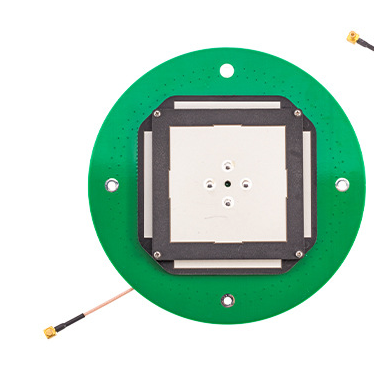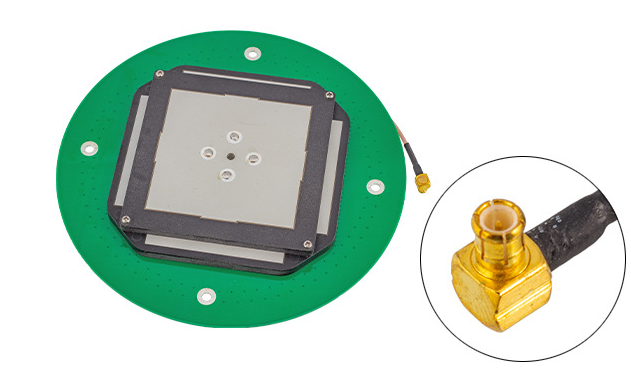Gps antenna axis ratio
With the wide application of Global Positioning system (GPS) technology, as the key equipment for receiving GPS signals, the performance of GPS antenna plays an important role in the positioning accuracy and application effect of GPS system. Among the performance parameters of GPS antenna, axis ratio (Axial Ratio, AR) is an important index, which has an important influence on the radiation characteristics, polarization performance and anti-jamming ability of the antenna. In this paper, the concept and characteristics of GPS antenna axis ratio and its application in GPS system are introduced in detail.

Overview of GPS Antenna Axis ratio
The axial ratio of the GPS antenna refers to the ratio of the electric field intensity in the main radiation direction (that is, the axial direction) to the electric field intensity perpendicular to the axial direction when the antenna radiates electromagnetic waves. In short, the axial ratio reflects the concentration of antenna radiation energy. In the GPS system, the antenna axial ratio has an important influence on the stability and anti-jamming ability of the received signal.
Axial ratio characteristics of GPS antenna
1. Radiation characteristics: the smaller the axis ratio is, the more concentrated the energy in the main radiation direction of the antenna is, the higher the radiation efficiency is, which is very important for GPS signal reception, because the concentrated radiation energy helps to improve the signal reception quality.
2. Polarization performance: the polarization performance of GPS antenna is closely related to its axis ratio. When the GPS signal is transmitted in a specific polarization mode, if the axis ratio of the antenna matches the polarization mode of the signal, then the receiving effect will be the best. The axis ratio is very important to ensure a good match between the antenna and the GPS signal.
3. Anti-jamming ability: the axis ratio has an important influence on the anti-jamming ability of the GPS antenna. The smaller axis ratio means that the antenna can reduce the influence of interference signals in other directions while receiving the main signals, thus improving the anti-jamming ability, which is particularly important for the use of GPS systems in complex electromagnetic environments.
Application of GPS Antenna Axis ratio
1. Navigation and positioning: in GPS navigation and positioning system, the optimization of antenna axis ratio helps to improve the positioning accuracy and stability of the system. By selecting antennas with excellent axis ratio characteristics, more accurate positioning can be achieved in complex environments.
2. Wireless communication: in the wireless communication system, the axis ratio of GPS antenna is very important to ensure the stability of signal transmission. By optimizing the axis ratio of antenna, the receiving quality and anti-jamming ability of signal can be improved, thus the performance of communication system can be improved.
3. Remote sensing technology: in remote sensing applications, the axis ratio of GPS antenna has an important influence on the ability to receive weak signals. By selecting antennas with smaller axis ratio, higher sensitivity and resolution can be achieved when receiving remote sensing data.
Optimization of GPS Antenna Axis ratio
In order to optimize the axial ratio performance of GPS antennas, the following measures can be taken:
1. Design optimization: the axial ratio performance is optimized by improving the design of the antenna, such as adjusting the shape, size and material of the antenna.
2. Manufacturing process: improve the manufacturing process level of the antenna, ensure the manufacturing accuracy and quality of the antenna, in order to reduce the axis ratio error.
3. Post-calibration: through the post-calibration of the antenna, the axis ratio error is corrected and its performance is improved.
GPS antenna axis ratio is one of the important indicators to measure the performance of GPS antenna, and it is of great significance to improve the positioning accuracy, stability and anti-jamming ability of GPS system. By understanding the concept, characteristics and application of GPS antenna axis ratio, we can better select and use GPS antenna to meet the needs of different application scenarios. With the continuous development of GPS technology, the research and optimization of GPS antenna axis ratio will become more important.
Prospect
With the continuous progress of global positioning system technology and the expansion of application fields, the requirements for the performance of GPS antennas are getting higher and higher. As one of the important indicators to measure the performance of GPS antennas, the research and optimization of axis ratio is of great significance. We can expect to make progress in the following aspects:
1. Application of new materials: with the continuous development of new material technology, new antenna materials will be widely used in the manufacture of GPS antennas. These new materials may have higher conductivity and lower dielectric constant, which is helpful to optimize the axial ratio performance of the antenna.
2. The introduction of new technologies: with the continuous development of wireless communication technology, new technologies such as beamforming and smart antennas may be introduced into GPS antennas. These new technologies help to improve the radiation characteristics and polarization performance of antennas, thus optimizing their axis ratio performance.
3. The application of artificial intelligence and machine learning technology: artificial intelligence and machine learning technology have achieved great success in various fields, and may also be introduced into the optimization of GPS antenna axis ratio in the future. By using a large number of actual data and algorithm training models, the intelligent prediction and optimization of GPS antenna performance can be realized.
4. Application of multi-band and multi-polarization technology: with the development of multi-band navigation system and multi-polarization communication technology, future GPS antennas may need to receive signals from multiple frequency bands at the same time or support multiple polarization modes, which will put forward higher requirements for the axial ratio performance of the antenna, which requires us to fully consider these factors in design and optimization.
With the wide application and continuous development of GPS technology, the research and optimization of GPS antenna axis ratio will become more and more important. we look forward to seeing more innovative technologies and methods applied to this field in the future to improve the performance and application range of GPS system.





